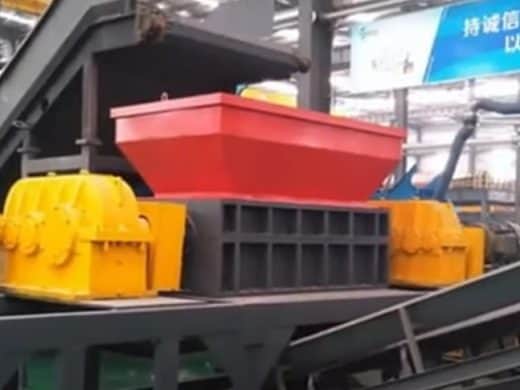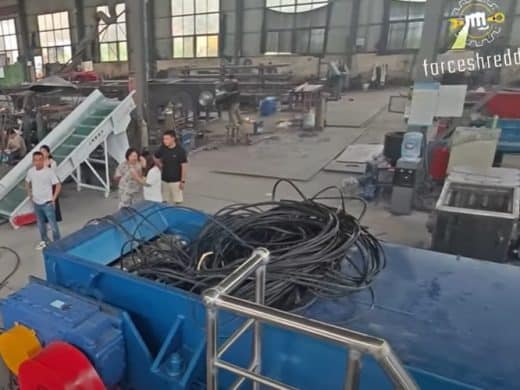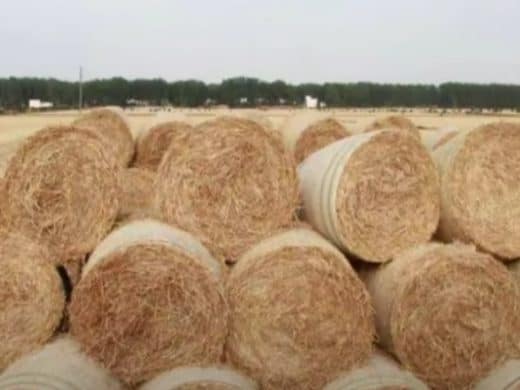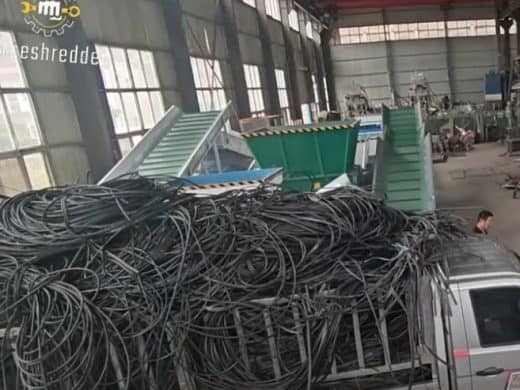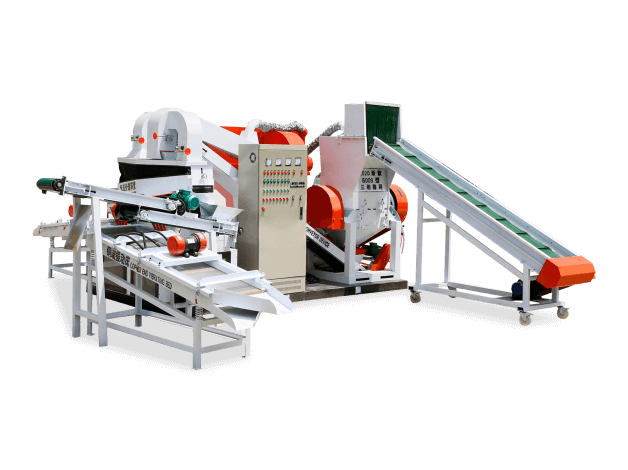In the world of industrial shredding, dual-shaft shredders stand out as powerful and versatile machines designed to handle tough materials efficiently. Whether you’re in recycling, waste management, or manufacturing, understanding how these machines work and their applications can help optimize your operations. This comprehensive guide explores dual-shaft shredders from multiple angles, providing actionable insights for businesses and professionals.
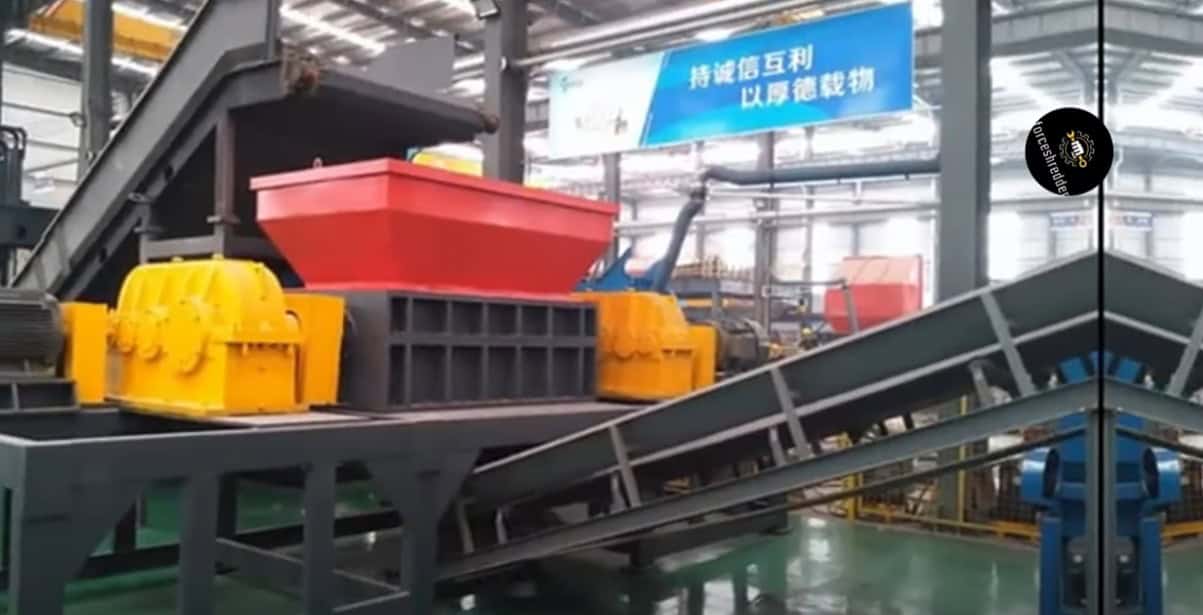
1. What Is a Dual-Shaft Shredder?
A dual-shaft shredder is a heavy-duty industrial machine engineered for robust size reduction applications. Characterized by two parallel rotating shafts equipped with intermeshing cutting blades, this equipment delivers exceptional performance in processing challenging materials that require high-torque, low-speed operation. The machine’s design focuses on maximizing tearing, shearing, and crushing actions through synchronized counter-rotation of its shafts.
Core Components:
– Dual Shaft System: Two hardened steel shafts rotating in opposite directions
– Cutting Discs: Specially designed blades mounted alternately on each shaft
– Hydraulic Drive System: Provides consistent power transmission and overload protection
– Reinforced Frame: Heavy-duty construction to withstand extreme operating conditions
– Control Panel: Advanced automation system with safety interlocks
Technical Advantages:
– High Torque Output: Capable of processing materials with exceptional durability
– Adaptive Feeding: Automatic speed adjustment based on material resistance
– Minimal Maintenance: Optimized blade geometry reduces wear and downtime
– Versatile Configuration: Customizable blade patterns and screen sizes
Industrial Applications:
Dual-shaft shredders serve critical roles in multiple sectors:
– Recycling Facilities: Processing electronic waste, tires, and mixed plastics
– Manufacturing Plants: Size reduction of production scrap and defective products
– Waste Management: Volume reduction of municipal and industrial waste
– Resource Recovery: Preparing materials for downstream separation processes
Video Commentary:
2. Operational Principle of Dual-Shaft Shredders
The operational principle of dual-shaft shredders represents an advanced engineering integration of mechanical dynamics and intelligent control systems. These machines achieve optimal size reduction through a meticulously coordinated process that combines high-torque mechanical action with precision control mechanisms.
2.1 Counter-Rotating Shaft System
– Two independently driven shafts rotate in opposite directions at precisely controlled speeds, typically ranging from 15-45 RPM
– Each shaft features strategically positioned cutting discs that intermesh with minimal clearance (0.5-2mm) to create continuous shearing points
– The synchronized rotation creates a grabbing and pulling action that automatically feeds materials deeper into the cutting chamber
2.2 Advanced Cutting Dynamics
– The cutting discs employ a unique hook-shaped design that maximizes material engagement and prevents slippage
– Materials undergo simultaneous shearing, tearing, and crushing actions between the intermeshing blades
– The progressive cutting geometry ensures consistent particle size reduction through multiple stages of size reduction
2.3 Intelligent Load Management
– Integrated torque monitoring systems continuously adjust rotational speed based on material resistance
– Hydraulic pressure sensors detect overload conditions and automatically reverse shaft rotation to clear jams
– Power consumption is optimized through variable frequency drives that match energy input to processing demands
Technical Processing Stages:
Primary Reduction Phase:
– Materials enter through the reinforced hopper and are initially engaged by the hook-shaped cutting discs
– The rotating shafts generate tremendous mechanical advantage through high-torque, low-speed operation
– Large materials are fractured into smaller fragments through combined tensile and shear stresses
Secondary Refinement Phase:
– Partially processed materials are forced between the precise intermeshing points of the cutting discs
– Continuous shearing action occurs at multiple contact points along the shaft length
– Material progression through the cutting chamber ensures comprehensive size reduction
Final Screening Phase:
– Processed materials pass through bottom-mounted screens with precisely calibrated apertures
– Oversized particles are recirculated via the shredding chamber’s gravity-assisted design
– Output particle size is determined by screen selection, typically ranging from 10-100mm
Advanced Control Systems:
– PLC-based automation maintains optimal operational parameters through real-time monitoring
– Pressure and temperature sensors protect against mechanical overload and thermal stress
– Remote monitoring capabilities enable predictive maintenance and operational optimization
3. Materials Suitable for Dual-Shaft Shredders
Dual-shaft shredders demonstrate exceptional versatility in processing diverse material categories, leveraging their high-torque, low-speed operational characteristics to handle materials that challenge conventional size reduction equipment. The following analysis details the material spectrum compatible with these robust machine
3.1 Plastics and Polymers
– Rigid Plastics: Bulk plastic containers, PVC pipes, HDPE barrels, and engineering plastics (ABS, Polycarbonate)
– Film Materials: Agricultural films, packaging materials, and woven bags requiring volume reduction
– Composite Plastics: Automotive components, electronic housings, and multi-layer packaging
– Reinforced Polymers: Glass-filled plastics and fiber-reinforced composite materials
3.2 Rubber and Elastomers
– Tire Processing: Whole passenger tires, truck tires, and off-road vehicle tires
– Industrial Rubber: Conveyor belts, rubber mats, and manufacturing scrap
– Specialty Elastomers: Silicone products, rubber hoses, and sealing components
3.3 Metallic Materials
– Non-Ferrous Metals: Aluminum profiles, copper cables, brass fittings, and zinc castings
– Light-Gauge Steels: Drums, containers, and automotive body parts
– Composite Metal Products: Electrical appliances, circuit boards, and electronic waste
– Metal-Polymer Combinations: Cable harnesses, coated metals, and insulated wires
3.4 Wood and Biomass
– Natural Wood: Logs, tree stumps, pallets, and construction timber
– Engineered Wood: Particle boards, MDF panels, and laminated wood products
– Biomass Materials: Agricultural residues, wood chips, and forestry waste
3.5 Specialty Industrial Waste
– Hazardous Materials: Chemical containers, medical waste (with proper containment)
– Composite Packaging: Tetra Pak containers, multi-material packaging
– Textile Waste: Carpets, synthetic fabrics, and industrial textiles
– Municipal Solid Waste: Mixed household and commercial waste streams
Technical Considerations for Material Processing:
Material Preparation Requirements:
– Pre-sorting to remove explosive or radioactive contaminants
– Size normalization through pre-breaking for oversize materials
– Moisture content management for optimal processing efficiency
Machine Configuration Adaptations:
– Specialized cutting disc geometries for different material categories
– Customized screen sizes based on desired output specifications
– Hydraulic system adjustments for varying material densities
Performance Metrics:
– Throughput capacity ranging from 1-50 tons per hour based on material characteristics
– Power consumption optimization through intelligent load management
– Wear part longevity extending to 800-2,000 operational hours
5. Key Considerations When Purchasing a Dual-Shaft Shredder
Acquiring a dual-shaft shredder requires comprehensive technical and operational evaluation to ensure optimal investment returns. The following factors demand meticulous assessment:
5.1 Technical Specifications Analysis
– Power Configuration: Evaluate motor power (typically 30-200kW) based on material hardness and throughput requirements
– Shaft Design: Examine shaft diameter (200-800mm), material composition (4140/42CrMo steel), and heat treatment processes
– Cutting Disc Parameters: Consider disc thickness (15-40mm), hardness (HRC 58-62), and special coatings (TiN, DLC)
– Control System: Assess PLC automation level, HMI interface quality, and data recording capabilities
5.2 Material-Specific Considerations
– Material Characteristics: Analyze hardness (Brinell scale), tensile strength, and abrasiveness
– Input Size Limitations: Verify maximum feed dimensions (typically 1000-2000mm width)
– Output Requirements: Determine required particle size (10-100mm) and uniformity specifications
– Contamination Tolerance: Evaluate equipment resilience to mixed material streams
5.3 Operational Parameters
– Throughput Capacity: Calculate required processing rates (1-30 t/h) with 20% safety margin
– Energy Consumption: Analyze specific energy consumption (kWh/t) across different load conditions
– Noise Levels: Ensure compliance with OSHA standards (<85 dB at operator position)
– Dust Control: Evaluate integrated filtration systems and emission control requirements
5.4 Maintenance and Serviceability
– Accessibility Features: Check maintenance access points and component replacement procedures
– Wear Part Lifecycle: Verify cutting disc longevity (800-2000 hours) and replacement costs
– Service Support: Confirm availability of technical support (24/7 emergency response)
– Spare Parts Inventory: Assess local parts availability and delivery timeframes
5.5 Commercial Factors
– Total Cost Analysis: Calculate ROI considering installation, operation, and maintenance costs
– Warranty Terms: Review coverage scope (typically 12-24 months) and limitations
– Supplier Credentials: Verify industry experience (minimum 5 years) and reference projects
– Customization Options: Evaluate engineering support for specific application requirements
5.6 Safety and Compliance
– Safety Systems: Verify presence of emergency stops, mechanical guards, and overload protection
– Regulatory Compliance: Ensure conformity with CE, ANSI, or other relevant standards
– Environmental Regulations: Confirm adherence to local emissions and noise regulations
5.7 Performance Verification
– Factory Acceptance Tests: Require witnessed testing with customer-supplied materials
– Performance Guarantees: Obtain written guarantees for throughput and particle size
– Installation Support: Confirm professional installation and commissioning services
Critical Technical Evaluation Checklist:
– ✓ Torque capacity verification (25,000-150,000 Nm)
– ✓ Hydraulic system pressure rating (16-25 MPa)
– ✓ Cutting chamber construction (welded vs. cast)
– ✓ Vibration analysis and damping systems
– ✓ Thermal management and cooling capacity
Prospective buyers should conduct thorough due diligence, including site visits to existing installations and comprehensive material testing. The selection process should balance initial investment with long-term operational costs, prioritizing reliability and service support over short-term savings.
Conclusion
Dual-shaft shredders are indispensable in modern industrial and recycling operations. Their ability to process diverse and challenging materials with high efficiency makes them a valuable investment. By understanding their working principles, applications, and key purchasing factors, businesses can make informed decisions to enhance their shredding processes.
For expert guidance on selecting the right dual-shaft shredder for your needs, consult with industry professionals who can provide tailored solutions.


